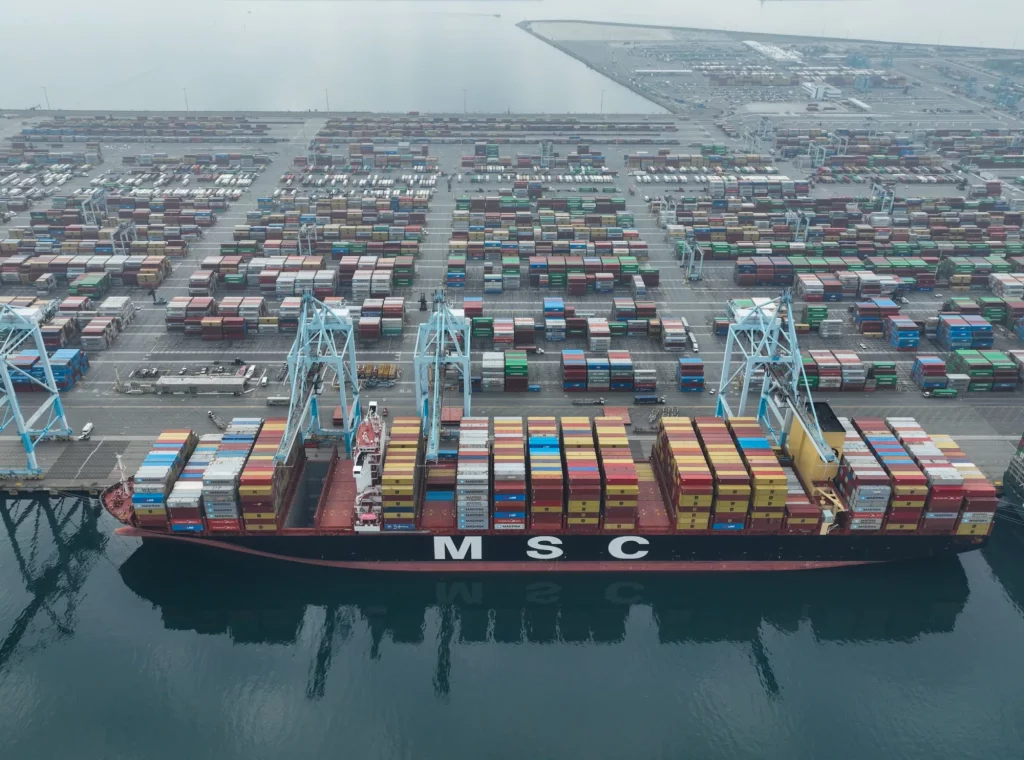In an era marked by persistent inflationary pressures and supply chain disruptions, investors are constantly seeking alternative assets that offer robust protection against rising prices. Shipping container Real Estate Investment Trusts (REITs) have recently emerged as a compelling inflation hedge, attracting attention for their unique positioning at the nexus of global trade logistics and real asset ownership. Unlike traditional real estate sectors that face cyclical demand and rising interest rate risks, container REITs benefit from structural shifts in global commerce, including the surge in containerized shipping, the digitization of logistics, and evolving trade patterns. This article explores whether shipping container REITs genuinely offer a reliable inflation hedge by analyzing the role of global container flow algorithms, the economics of lease rates versus purchase costs, and tax advantage comparisons. Understanding these dimensions is crucial for investors evaluating this niche yet rapidly growing segment of real estate.
Global Container Flow Algorithms: Navigating Supply and Demand Dynamics
The foundation of the shipping container REIT thesis rests on the intricate movement of containers across global supply chains. Unlike other real estate sectors where demand can be opaque or locally driven, container flow is highly data-driven, influenced by real-time tracking and sophisticated algorithmic modeling. Shipping companies, port operators, and logistics firms increasingly rely on artificial intelligence and machine learning algorithms to optimize container repositioning, reduce empty runs, and balance supply-demand mismatches across regions.
These algorithms integrate vast datasets encompassing trade volumes, shipping schedules, port congestion metrics, geopolitical events, and seasonal consumption trends. For container REITs owning leasing rights to container storage yards, terminals, and intermodal hubs, the ability to anticipate flow disruptions directly impacts occupancy rates and pricing power. During inflationary periods, when supply chains face bottlenecks and shipping demand spikes, containers pile up at key transit points, driving up the need for leased container yard space.
This data-driven precision gives container REITs a near real-time understanding of demand elasticity. Unlike traditional warehouse REITs that depend on broad industrial demand, container REITs capitalize on the scarcity of strategically located yards capable of handling surging container volumes. Moreover, the growth of e-commerce and just-in-time manufacturing adds a layer of resilience to container storage demand, as companies prioritize inventory velocity over bulk storage. The sophistication of global container flow algorithms thus reinforces container REITs’ capacity to capture inflationary rent uplifts tied to tangible trade activity.
Lease Rate vs. Purchase Economics: Weighing Cash Flow Stability Against Asset Appreciation
When evaluating container REITs as an inflation hedge, a key consideration is the balance between lease rate growth and purchase economics. Container REITs typically operate by leasing large parcels of land near major ports and transportation corridors and subleasing space to shipping lines, freight forwarders, and logistics providers. This business model generates recurring rental income with embedded inflation protection through contractual escalators and market-driven lease renewals.
Lease rates for container yards have exhibited upward momentum in recent years due to constrained supply of suitable land and increased shipping volumes. The relatively inelastic supply of waterfront properties and high costs of land reclamation or port expansion create natural barriers to entry, supporting sustained lease rate appreciation. For investors, this translates to stable cash flows that can keep pace with or outstrip inflation, positioning container REITs as income-generating inflation hedges.
On the other hand, purchase economics—acquiring land or infrastructure outright—presents a different risk-reward profile. Container REITs with ownership stakes can benefit from capital appreciation as global trade volumes grow and port real estate becomes scarcer. However, these assets are capital intensive, have long development timelines, and face regulatory hurdles including environmental compliance and zoning restrictions.
The hybrid model adopted by many container REITs, combining leased land with owned assets, allows portfolio diversification between income stability and capital growth potential. Importantly, lease agreements often include inflation-linked clauses, while purchase economics reflect longer-term value accumulation. For investors wary of traditional real estate’s sensitivity to interest rate hikes, container REITs provide a differentiated inflation hedge via a blend of predictable lease income and appreciating physical assets tied to indispensable global infrastructure.
Tax Advantage Comparisons: Enhancing Investor Returns
Another dimension strengthening the inflation-hedging appeal of shipping container REITs is their favorable tax treatment. Like other REITs, container REITs benefit from a pass-through taxation structure, whereby income generated is distributed directly to shareholders and taxed at individual rates, avoiding corporate income tax. This contrasts with direct real estate ownership structures, which may be subject to double taxation and additional state or local levies.

Moreover, container REITs often invest in infrastructure-related assets eligible for accelerated depreciation and capital investment tax credits. These tax advantages reduce the effective tax burden on operating income, enhancing distributable cash flows even amid rising operating costs driven by inflation. Investors can thus expect more stable after-tax income streams compared to other real estate or industrial assets.
International container REITs with cross-border operations may also benefit from treaties mitigating withholding taxes and enabling efficient profit repatriation, further boosting investor returns. This tax efficiency is particularly attractive during inflationary periods when nominal income grows, as it preserves more value for investors.
Comparatively, other inflation hedges such as commodities or Treasury Inflation-Protected Securities (TIPS) lack the combined benefits of steady income, capital appreciation, and tax efficiency that container REITs offer. This unique trifecta places shipping container REITs in a privileged position for portfolio diversification in inflationary environments.
Challenges and Risks: The Other Side of the Coin
Despite their advantages, container REITs are not without challenges. Rising interest rates designed to tame inflation can increase REIT financing costs, pressuring net operating income and valuations. Container volumes are also sensitive to global economic cycles; a severe downturn could reduce shipping demand, squeezing occupancy and lease renewals.
Environmental regulations aimed at port emissions and land use may impose costly compliance requirements on container yards. Technological disruptions, such as automated container handling or shifts toward alternative shipping modalities, could reshape demand patterns. Additionally, geopolitical tensions affecting trade routes present a latent risk to container flow stability.
Investors must weigh these risks against the inflation-hedging potential, demanding rigorous due diligence on REIT management quality, portfolio diversification, lease contract terms, and geographic exposure.
Conclusion: A New Inflation Hedge Emerging from Global Trade Complexity?
Shipping container REITs have carved out a distinct niche as potential inflation hedges by capitalizing on the indispensable role of container logistics in global commerce. Their alignment with sophisticated global container flow algorithms provides a data-driven edge in managing supply-demand dynamics. The balance of lease rate growth and purchase economics offers both cash flow stability and asset appreciation potential, while tax advantages further amplify investor returns.
As inflation remains a central concern for investors worldwide, container REITs deserve serious consideration as part of diversified portfolios seeking inflation protection beyond conventional real estate and financial instruments. However, like all investments, they require careful analysis of inherent risks and market conditions.
With the ongoing evolution of global trade, technology, and regulation, container REITs represent an innovative asset class poised at the crossroads of real estate, infrastructure, and logistics—a sector likely to gain prominence in inflationary market environments.














































